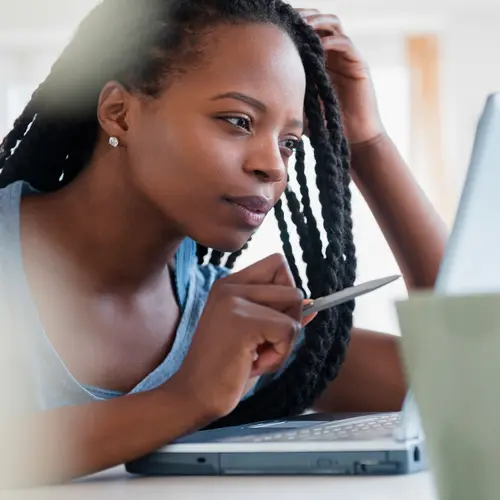Every multiple sclerosis (MS) diagnosis is unique. In addition to affecting how your body functions physically, it can also affect your vision. Prepare yourself with reading strategies to make reading more enjoyable for you. As you work toward being able to read and do your typical daily activities independently, choosing a reading tool to help you will come in handy.
First, you should seek to fully understand what your needs are when it comes to choosing a reading tool. A neuro-ophthalmologist, occupational therapist, optometrist, or orientation and mobility specialist can help you decide what your unique needs might be. Generally speaking, you will need a tool that helps with magnification, lighting, and controlling glare.
When it comes to magnification, you can look into several options. You can increase the size of the text or screen you're looking at, or you can get something to enhance the size of fixed text. Tools that do this are magnifiers or telescopes. Magnifiers can be handheld, electric, connected to cell phone apps, and otherwise.
Another way to enhance magnification is by purchasing items in large print. You can find newspapers, books, clocks, calendars, and even playing cards in large print. There's an option on your smartphone, as well, to increase your text size. If you're reading on an electronic device, you should be able to increase the text size.
It's essential to have lighting explicitly directed toward what you're reading. If you visit your local hardware store or search online, you can find full-spectrum lighting that decreases glare and increases contrast. You can get a desk or floor lighting, or you can keep portable options with you at all times, like a flashlight app on your phone, an LED flashlight, or a keychain flashlight.
Glare and lack of contrast are big problems when it comes to reading with MS. You'll need to be able to invert the colors on your tool to help increase contrast. Check to see if your device can be fitted with a sun filter to help control glare, and try to avoid sitting next to windows while reading.
If needed, you can use a line guide to keep your place on the page. Using a solid color bookmark, for example, will decrease visual clutter and distraction as you focus on one portion of the page. For those experiencing double vision, you can cover one of your eyes with a unique tool like a vision occluder as you read.
Don’t be afraid to ask for help. There are many resources available that your doctor can walk you through if you’re living with low vision.

